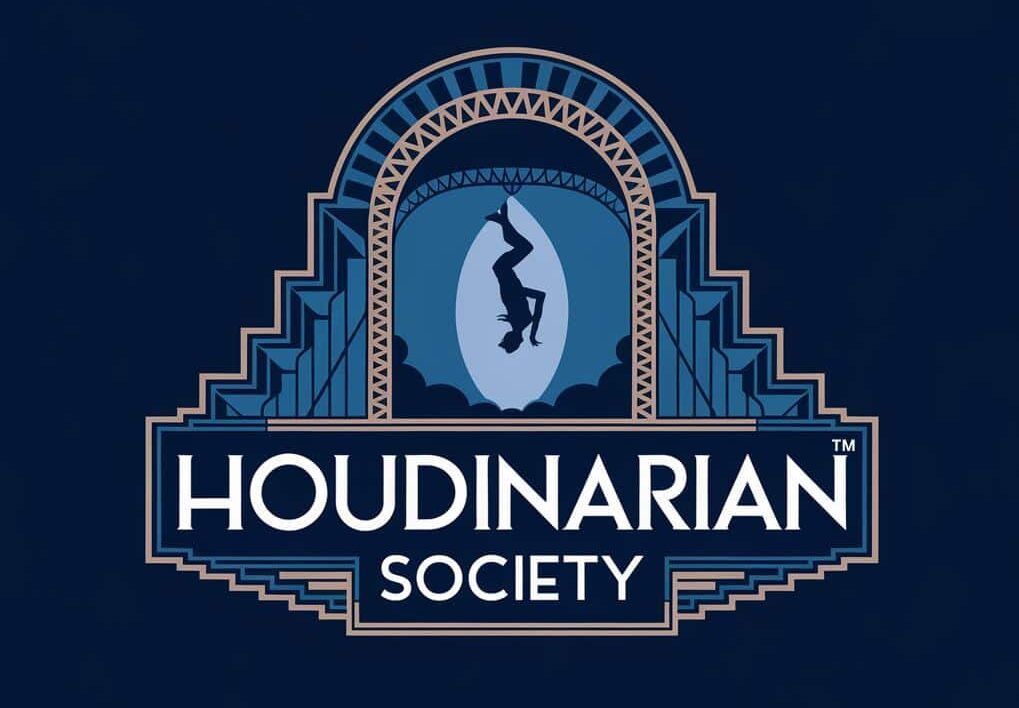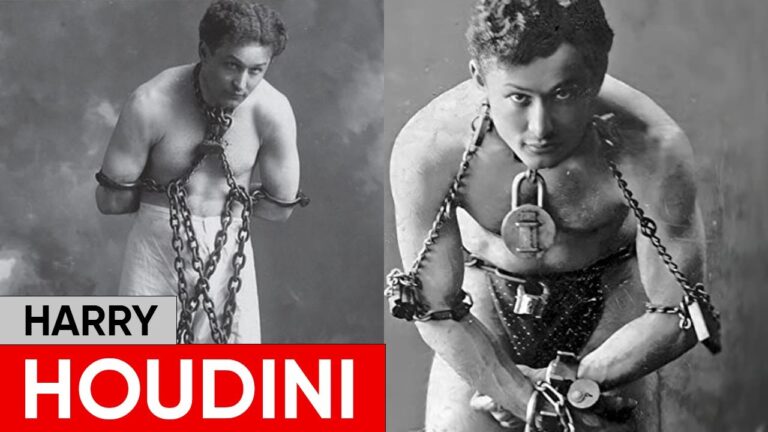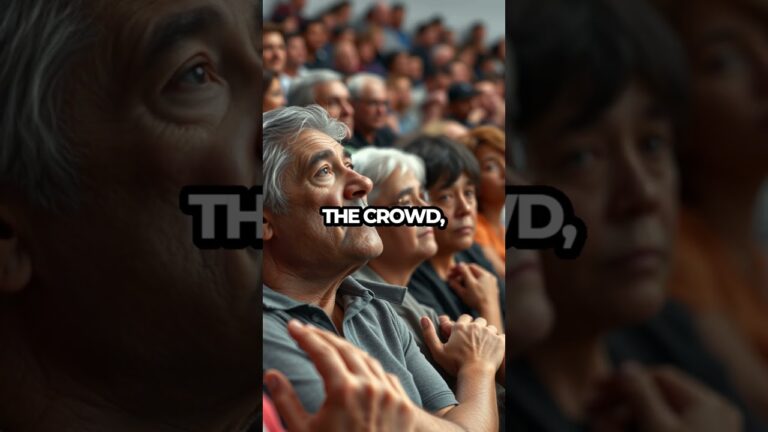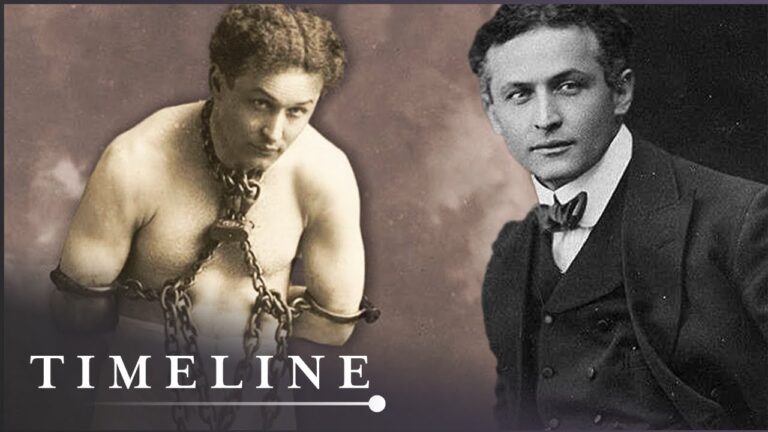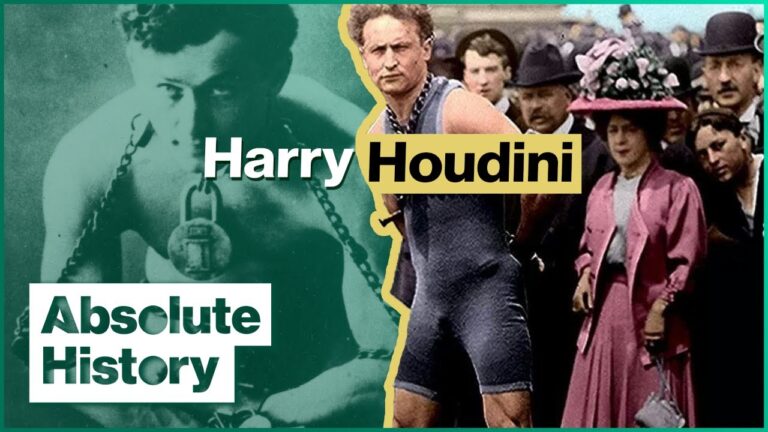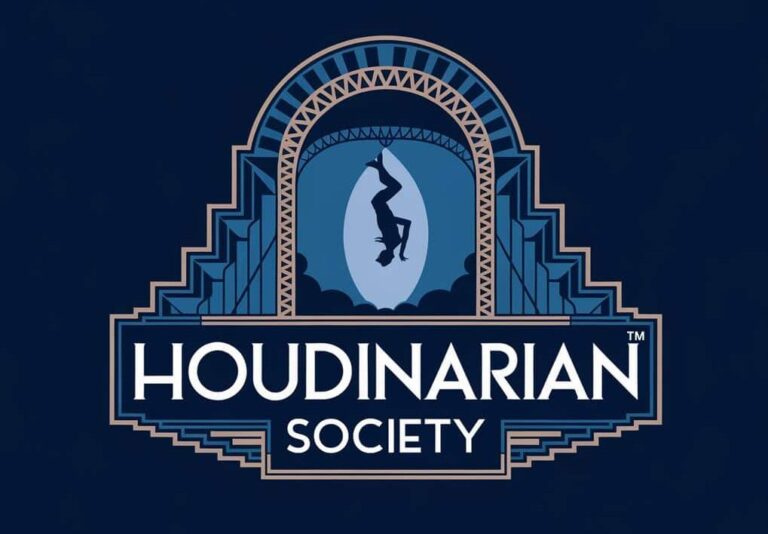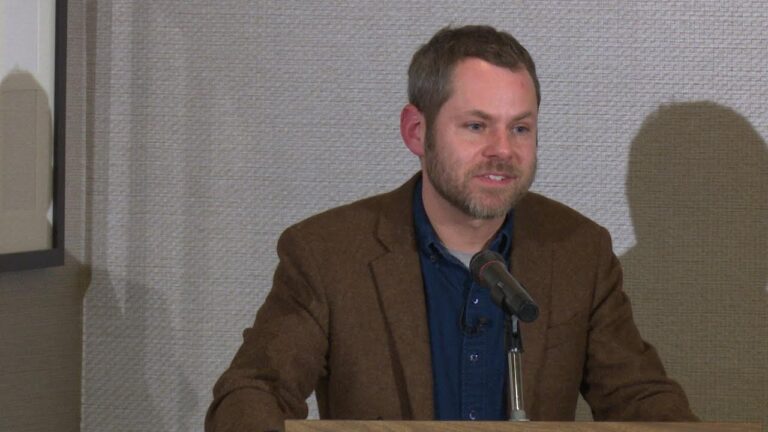Houdini’s Memento Mori Image
Shocking details from Houdini’s “last photo” reveal secrets of 1920s embalming, mysterious reflections, and the truth behind his final journey—was this really his memento mori?
Victorians believed the worst fate that could befall someone was to die alone and be forgotten.
Memorial death images, or Memento Mori, were often taken of a relative as a tangible form of remembrance. Harry Houdini had nothing to fear in that regard, as his importance in the world of magic has only grown more than 99 years after his death.
Much has been made about this picture from the Jon Oliver Collection which was taken from Bess’s scrapbook. On the back is written in her hand ” this is the last photo of Houdini.”
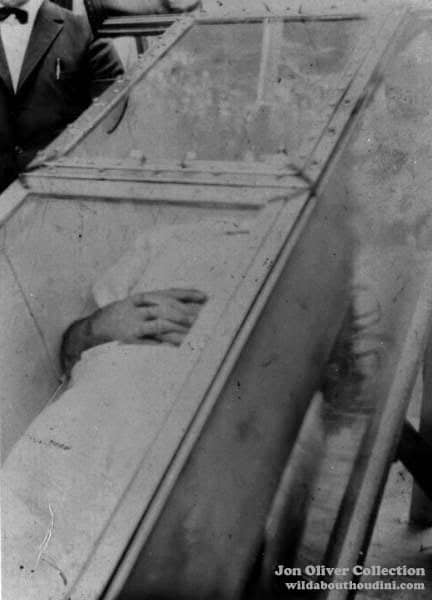
Others believe it is an image from Summerfield’s Furniture store test in September 1926. I disagree with this conclusion based upon the following observations and embalming methods of 1926.
Protective Clothing for the Dead
After the body is embalmed it was normally dressed, but in this instance, Houdini’s fashionable performance clothing had already been shipped to New York. In Victorian times, shrouds were used to protect the skin from rubbing off during movement of the casket.
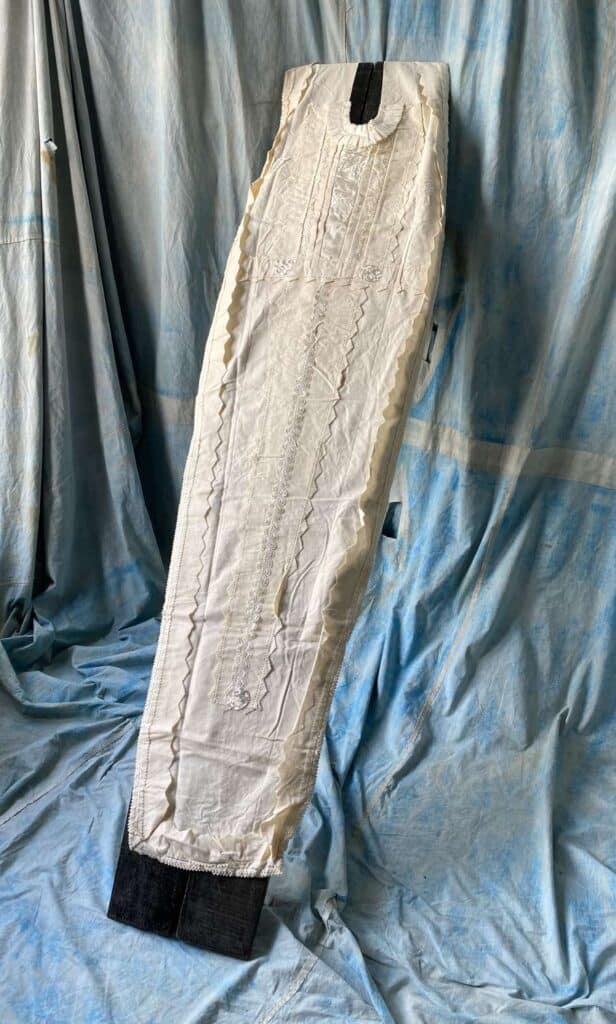
Embalming Practices 1920’s
The Miriam-Webster dictionary defines embalming specifically as the ” treatment (of a dead body) – with special chemicals – so as to protect from decay”. Notice there is no mention of “pickling” a body so that it is stiff but to “fix in a static position”. Cadavers in anatomy labs still have some flexibility months after embalming.
Embalming fluid is used as an antiseptic and an antibacterial, and many times funeral homes had their own recipes, which used formaldehyde mixed with either arsenic, carbolic acid, glycerin and or creosote.
If clothing was not available for the deceased, mortician jackets and embalming sleeves were provided to prevent abrasions of the elbows and joints while the fluids “set” the body in position. Notice how the end of the sleeves stop at the wrist.

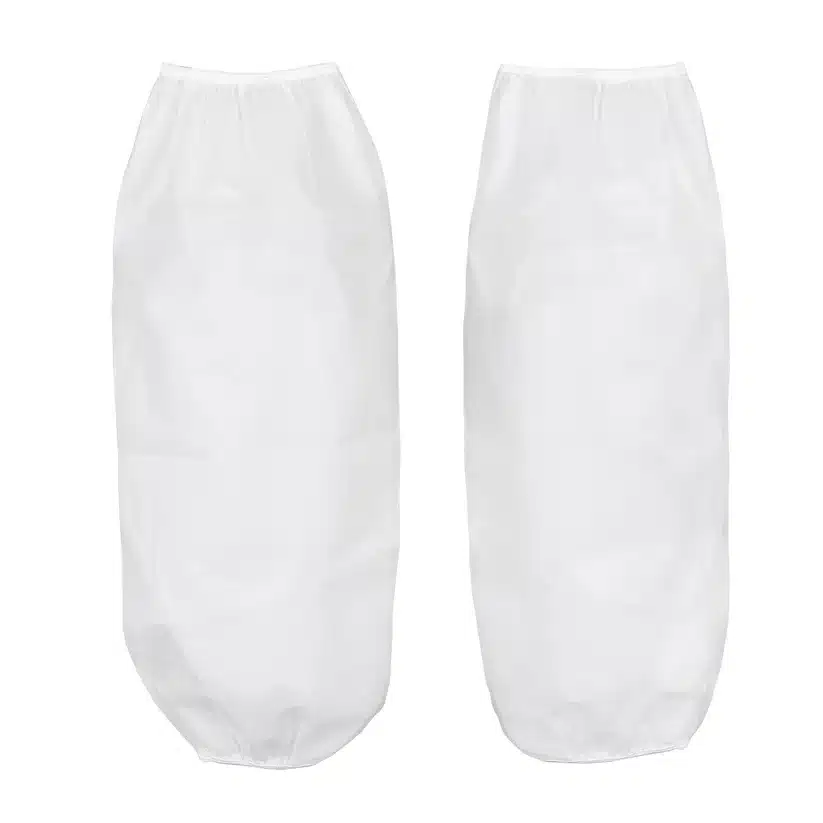
Stabilization of the Hands and Arms
Since “setting” often took a few days, undertakers used rubber bands to secure the hands together and prevent jostling of the upper torso during transference into a casket, or in Houdini’s case, a long journey from Detroit to New York. Below is an interesting TikTok Video I found demonstrating one version of this technique.(click on the arrow to play the video)
Cloth Liner Inside Casket Liner
if you look at the left side of the casket liner (as you see the image ) you will notice a “half moon” which is part of the cloth lining to this casket liner which was not secured underneath the glass lid and may have slipped down during transport from Detroit to New York.
Embalming often causes some body parts to swell, such as the feet, and in some cases, other more personal areas. A half cloth was often placed over the legs to provide dignity and respect.
Houdini often performed wearing short trousers/swimming suits and his legs were free to be seen. If this image was from the Summerfield’s Furniture store test in September 1926 there would be no need for the half blanket clearly seen in the photo.
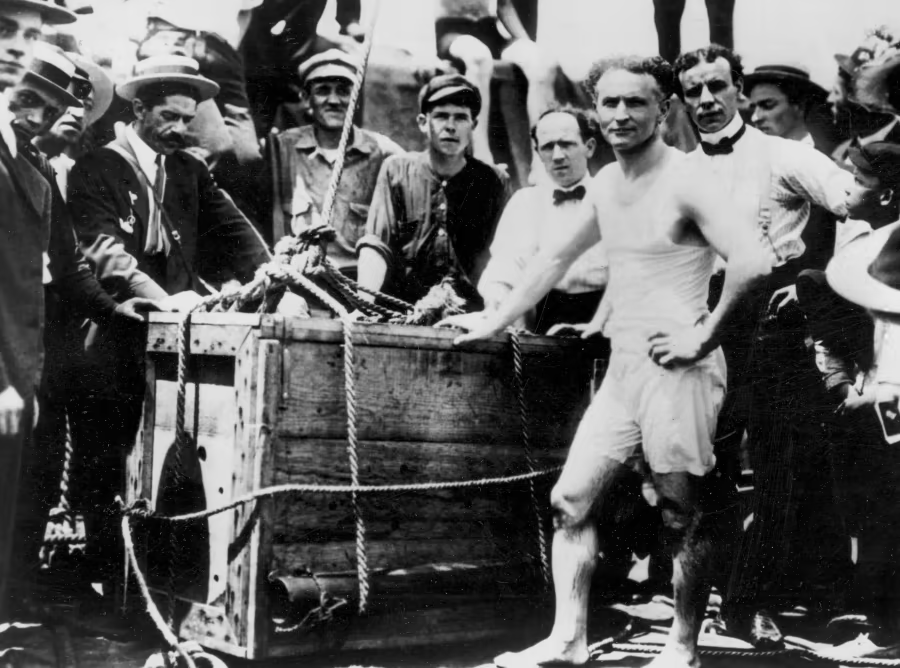
Houdini asked to be buried with his mother’s letters inside his casket, so I assume they may be hidden from view under the cloth. We do know they were eventually placed inside the pillow that lay beneath his head.
Casket Stands
The metal rail with some folded material underneath the casket liner could be a canvas medical stretcher, which surprisingly, can hold up between 400-500 pounds. The triangular object seen on the right could be a portable casket stand, which was made from steel. In my mourning museum collection I have those style of casket stands from the 20’s.
Faces In The Glass
In the region of Houdini’s face is a reflection in the glass of several people standing on the curb with what looks to be a column of some sort. Newspapers reported that family and friends were at the station on the morning of November 2, 9AM when the body arrived.
The weather was cloudy and around the low 40’s with rain expected. This would affect the lighting, allowing less light into the casket liner around 9 AM obscuring Houdini’s face with their reflection.
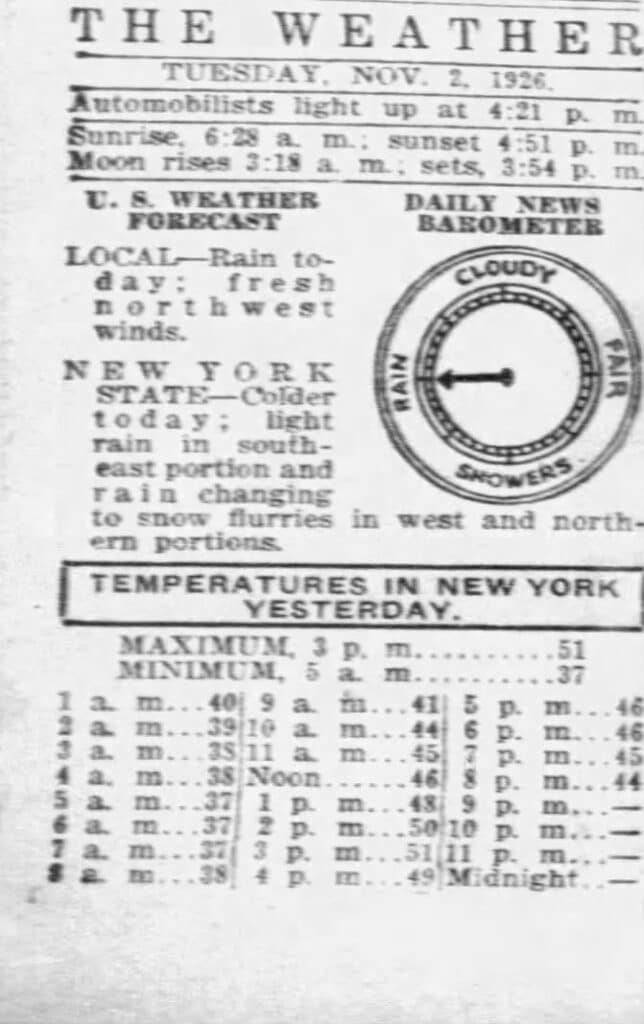
I believe this supports why they appear and that the image was taken in New York when the casket liner was being removed from its wooden carry crate to the funeral hearse for transport to the West End Chapel Mortuary.
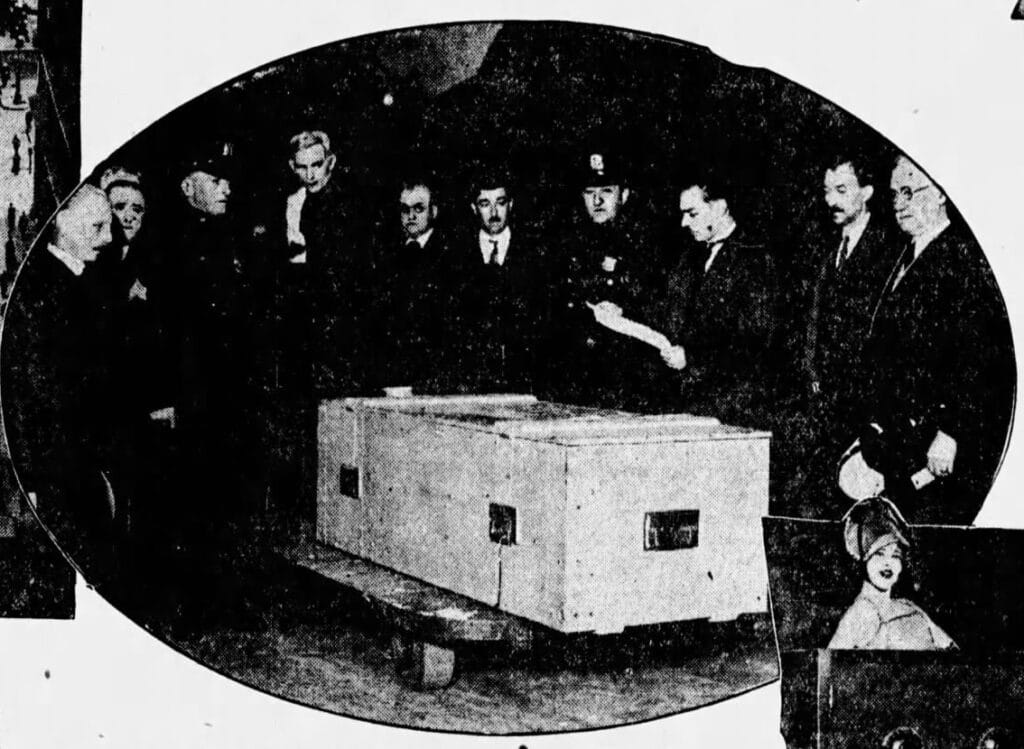
It is my opinion that first image is indeed the Memento Mori photograph of Houdini taken in New York at the train station on November 2, 1926.
He is dressed in a mortuary jacket with sleeves seen as the “dark” image below the wrist on the right arm.
The hands are interlaced with a rubber band for stabilization.
A cloth liner was applied to the interior with a modesty blanket over his lower torso.
The casket liner may be on a medical stretcher supported by casket stands as it’s being transported to the hearse.
The reflections in the glass over his face are consistent with a cloudy sky decreasing light, resulting in the visualization of the few family and friends who were allowed to meet Houdini’s casket at the train station.
